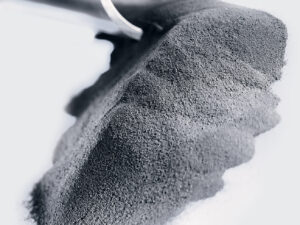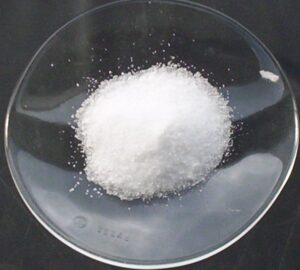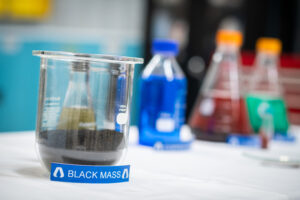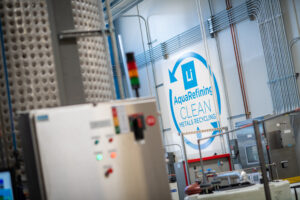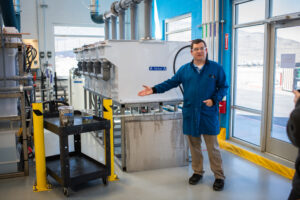Aqua Metals’ groundbreaking lithium-ion battery recycling process (Li AquaRefining) is best described as regenerative electro-hydrometallurgy, but that is quite a mouthful.
In this installment of the Battery Recyclopedia, we’ll break down the term and explain exactly what that means.
Regenerative electro-hydrometallurgy is an advanced recycling technique focused on lithium-ion batteries, which are commonly used in everyday devices like smartphones, laptops, and electric vehicles. The process is designed to be sustainable, using less energy and generating less pollution than current recycling methods, making it a more cost-effective and viable choice.
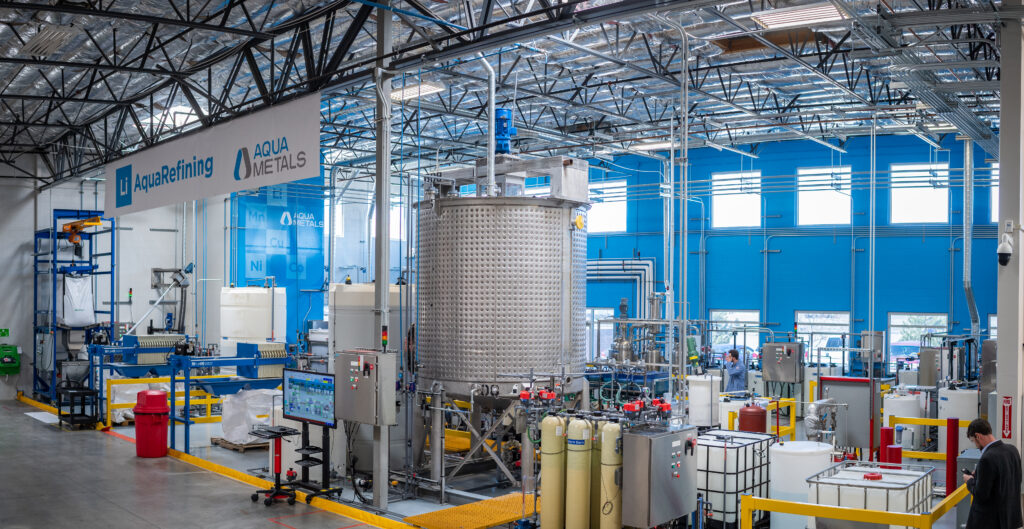
To understand this process better, let’s break down the term:
- Regenerative: This means that the process can continuously reuse and recover materials, which helps minimize waste and promote a circular economy. In AquaRefining, the hydro solution used to separate the battery metals in ‘black mass’ is regenerated and can be used for the next batch of recycled materials.
- Electro-: This recycling method uses electricity as the catalyst to help separate and extract the valuable materials from the batteries, instead of polluting furnaces or intensive chemical processes. AquaRefining uses an innovative application of electroplating to recover high-purity metals.
- Hydrometallurgy: This refers to the use of water-based solutions to extract metals from their ores or from used materials, like shredded battery materials. AquaRefining uses a dilute acidic solution which is recaptured in the recycling process (regenerative).
So, regenerative electro-hydrometallurgy combines electricity and water-based solutions to recycle lithium-ion batteries in a much more sustainable way.

Closed-Loop Lithium Battery Recycling
Aqua Metals’ electro-hydrometallurgical process is “closed-loop” because it captures and reuses the materials and chemicals involved in the recycling process, rather than disposing of them as waste.
This significantly reduces the amount of waste generated and minimizes the environmental impact, as much as 95% less landfill waste than typical hydrometallurgy.
Similarly, since this process recaptures the chemicals needed for recycling in a closed-loop, we are able to avoid the recurring expenses. embedded emissions, and trainloads of chemicals necessary for typical hydro-recyclers.

The Future of Lithium Battery Recycling
Compared to other recycling methods, regenerative electro-hydrometallurgy uses much less energy, which means lower greenhouse gas emissions and less pollution.
Additionally, this method can recover valuable materials from lithium battery black mass more efficiently, resulting in more cost-effective recycling with more end-product to deliver back into a circular supply chain.
In summary, regenerative electro-hydrometallurgy is a green and innovative recycling process for lithium-ion batteries. Moreover, the closed-loop Li AquaRefining system minimizes waste and environmental impact while using less energy, making it a more viable and sustainable solution for battery recycling.
Currently, Aqua Metals is the only operational electro-hydrometallurgical recycler in North America. Learn more at our innovative Lithium Pilot Recycling Hub.


